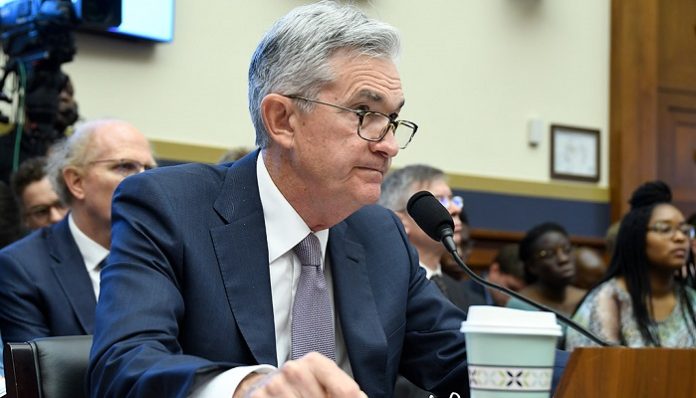Don’t rely on the Fed, says The Heartland Institute’s S.T. Karnick, for anything but recessions, because federal spending is the real problem.
With its latest interest rate hike, the Federal Reserve is desperately trying to repair the economic damage caused by the fiscal and regulatory policies of the Biden administration. Unfortunately, persistence in this course will only “solve” the problem by crashing the economy, which it is perversely intended to do.
The Fed’s attempts to correct for overspending by Congress and the president are a problem, not a solution.
“The Federal Reserve and other central banks are raising interest rates to beat back inflation by slowing economic growth,” The Wall Street Journal reports.
The Fed’s manipulation of interest rates has a strange logic. When the federal government overspends (note: it never underspends) and thereby fuels inflation, the Fed reins in the economy by increasing interest rates, which makes it more difficult to borrow money with which to invest in productive enterprise or finance consumer purchases.
When that causes high unemployment, the Fed reverses course and pumps money into the economy to spur investment and personal spending.
As a result, the Fed routinely sees good news as bad and bad news as good: a growing economy and low unemployment are seen as inflationary, and the solution is a recession.
The Fed implemented record-low interest rates throughout President Barack Obama’s tenure, to mitigate the damage of his high-spending fiscal policies and repressive regulatory regime in the wake of the 2008 recession.
The Fed then increased the federal funds rate during the Trump administration until the 2020 Covid lockdowns. Trump’s tax cuts and regulatory reforms stimulated economic activity and raised wages – bad news! – so the Fed applied interest rate hikes to keep people from wanting to buy too many goods and services and presumably unleash inflation. The economy expanded anyway, because Trump’s supply-side reforms unleashed greater production of goods and services.
After the record-swift recovery from the Covid depression during Trump’s final year in office, President Joe Biden and the congressional Democrats engaged in a spending spree ostensibly intended to stimulate the economy, which was already expanding nicely. The Fed added accelerants by keeping interest rates at near-record lows, and Biden went on a regulatory binge that throttled investment. Those irresponsible decisions pushed inflation to levels not seen in more than 40 years. Now the Fed craves a good, hard recession to make everything better.
“The Fed is operating on the assumption that the only way to get inflation down is with decreased demand. And the only way they’re going to do that is if the unemployment rate ticks higher,” Thomas Simons, an economist at Jefferies Financial Group Inc., told The Wall Street Journal.
Uh-oh: new claims for unemployment compensation fell slightly during the last full week of October, the Department of Labor reported on Thursday.
That is awful news, according to the Fed.
“The broader picture is of an overheated labor market where demand substantially exceeds supply,” Fed Chairman Jerome Powell had told the press on Wednesday.
This is a particularly destructive line of thinking because unemployment is a lagging indicator: it rises after the economy has begun to slow, not the other way around. Relying on unemployment to indicate economic tightening is like seeing ice-skaters as a harbinger of cold weather.
In hoping for a “real softening” of the labor market, Powell is channeling his inner Paul Volcker, the Fed chair from 1979 through 1987, who has been lionized for beating inflation by raising interest rates radically – as high as 22 percent – and bringing on two deep recessions.
Volcker, however, had the benefit of pro-market federal government policies absent today. Congress and President Ronald Reagan lowered federal taxes and carried out much-needed economic deregulation. That enabled the American people to increase the amount of goods and services they produced, which resulted in strong, steady economic growth.
Relying on the Fed to reduce inflation created by high government spending and tight economic regulation damages the economy without solving the underlying problem, which is the dead weight of government that is holding down productive enterprise.
The real solution is for the federal government to return not to Volcker’s recession-inducing rate hikes but to the pro-market policies of the Reagan administration.
Fortunately, upcoming GOP control of the U.S. House of Representatives provides an opportunity to put the brakes on Biden’s bizarre plan to destroy the nation’s economy. With a president who gleefully states his intention to cancel the Industrial Revolution, the American people desperately need the checks and balances of a more-sensible Congress to ensure that does not happen.
S. T. Karnick is a senior fellow and director of publications for The Heartland Institute, where he edits Heartland Daily News.











